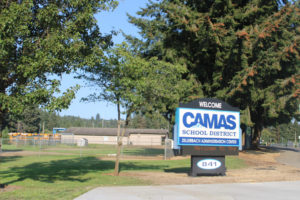The Camas teachers’ strike entered its second week Tuesday, Sept. 5, following an already scheduled school break for the Labor Day holiday.
Camas schools remained closed Tuesday and Wednesday, Sept. 5-6, as members of the Camas Education Association (CEA), the union representing around 450 Camas public school educators, remained on the picket lines, calling for a higher cost-of-living increase to keep up with local inflation rates; a cap on class sizes; and dedicated resources for music, physical health, library and health programs in all of Camas’ K-12 schools.
Camas School District students were slated to return for the 2023-24 school year Monday, Aug. 28.
The district said this week that it had proposed a two-year contract to the teachers’ union on Aug. 27, which included a cost-of-living increase of 5.7% for the 2023-24 school year and another 5.9% increase during the 2024-25 school year, plus a 2% increase on teachers’ base salaries in both years of the contract. If approved, the increase would give Camas teachers a salary schedule of $63,287 to $118,363 depending on experience and education levels in the first year and of $66,818 to $124,991 for the second year.
The district also explained that these salaries are for the contract year, which includes 7.5-hour days for 185.5 days per school year. The district has an additional contract for extra time, responsibilities and incentives (TRI) that pays teachers 3.3% of their base salary for extra time spent on activities outside the regular school day, including parent conferences, curriculum development, assessment and grading responsibilities, special education paperwork and online training.



